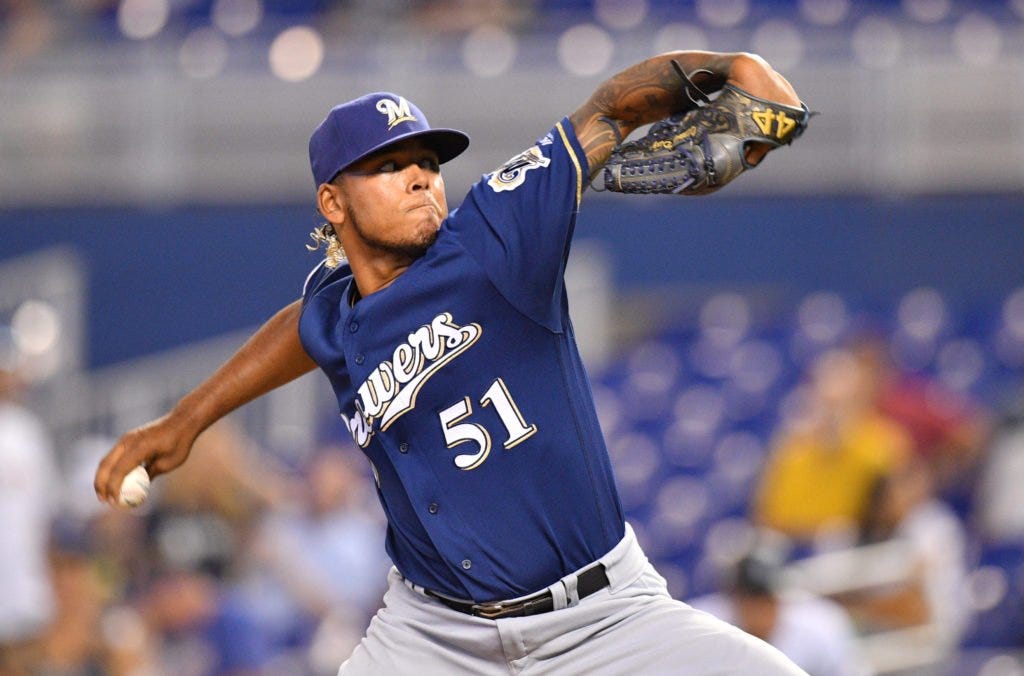It's Time to Move on From "Innings Eaters"
The term “innings eater” refers to a starting pitcher who isn’t a dominant, front-of-the-rotation type of pitcher, but can consistently go five, six or even seven innings without getting chased off the mound.
To this day, almost every team carries at least one. There are two reasons for this. First, it is nearly impossible to construct a rotation of five ace-caliber arms, and second, these pitchers help keep the bullpen from being overworked.
But is this necessary? Are there other ways to combat these problems?
If a pitcher allows four runs over six innings every start over the course of the season (6.00 ERA), that’s an awful season, but that line isn’t always looked at the same way on a game-to-game basis. A six-inning, four-run effort is often shrugged off as “he was alright,” and sure, you can argue that pitcher kept his team in the game. But teams average fewer than five runs per game (4.83 in 2019), so while that’s technically true, this leaves that team’s bullpen with very little margin for error, and puts pressure on the offense to have an above-average outing every time that starter takes the mound.
Teams were 56-142 last year (.283 W-L%) when their starters went exactly six innings with at least four runs allowed, and just 35-58 (.376) when their starters went more than six innings with at least four runs. So even with those innings being eaten, teams do not have much success in these games.
Rick Porcello, who has managed a Major League-leading 117 four-run outings since his debut in 2009, is one of baseball’s prototypical back-end starters. Porcello’s teams are 34-83 in such outings for a dismal .291 W-L%. Teams continue to send him out to the mound every fifth day despite the fact that he is statistically likely to allow at least four runs every third start, simply because he can provide length. Outside of an outlying, Cy Young award-winning 2016 campaign, Porcello has been consistently average or worse (career 99 ERA+)
Despite averaging 4.48 runs per game over Clayton Kershaw’s career, the Dodgers are just 11-38 when Kershaw allows at least four runs (6-19 when it’s exactly four runs). On the other hand, they are 223-80 when he allows three or fewer. Kershaw is certainly not the problem -- those 49 starts make up a tiny fraction of his long, decorated career -- but it shows that even the best pitchers on the best teams run into trouble when crossing the four-run threshold.
Every team carries 13 pitchers -- even more in 2020 -- meaning at least eight relievers at a given time. That extra reliever provides a lot more flexibility for managers, especially if a team has relievers who can record more than three outs.
Rather than employing a mediocre starter from whom the best hope is to “eat innings,” teams can be creative in filling out their rotations, using higher-upside arms without relying on them to go too deep into games.
With the birth of the “opener” in 2018, the Tampa Bay Rays unlocked a new method of roster construction. The opener is essentially a reliever who throws at the beginning of the game, often lasting just one inning -- three to five batters -- and, ideally, facing the opposing team’s strongest same-side batters in the inning that has yielded the most runs in each of the last 10 seasons.
Plus, by the time the “follower” has made his way through the opposing team’s lineup twice, the back half of the order will be due up, which either allows him to face a few extra hitters, or gives the next reliever a less daunting task.
Another option to replace an innings eater is piggybacking two of those higher-upside pitchers every fifth day, with each of them running through the lineup twice. Ideally, this would provide managers with six to eight strong innings without taxing the bullpen.
“Bullpen games” have become part of the modern game, as well. If most of a team’s relievers can go multiple innings, it eliminates the need to roster back-end starters like Porcello, Kyle Gibson or Mike Leake. I mean, there’s no need to base storylines around Mark Brendanawicz when you can throw in stronger secondary characters like Perd Hapley, Joan Callamezzo, Tammy 2 and Jean-Ralphio every so often, right?
Being able to develop talented pitchers into once-through-the-order weapons would completely alter how pitching staffs are manufactured-- in the most efficient way. When that fifth spot in the rotation comes around, the three or four most rested relievers could piece together a complete outing.
Just about every pitcher who makes it to the big leagues has untapped potential. Sometimes that comes from an overhaul of mechanics and approach (Lucas Giolito), sometimes from a new team unlocking something within the player’s pitch repertoire (Dylan Bundy). And it doesn’t even have to happen early in a player’s career (Charlie Morton, Lance Lynn).
But there are also tons of “failed starters” who put together successful careers in relief. Josh Hader, Drew Pomeranz, Archie Bradley, Andrew Miller and Wade Davis are just five of many pitchers who struggled as starters at the upper levels, only to find success in a late-inning role with multi-inning capabilities.
And then you have guys like Jalen Beeks, Freddy Peralta, Michael Lorenzen and Luis Cessa, all of whom have been able to carve out roles for themselves as a hybrid, once-or-twice through the order type of long reliever.
There is no shortage of arm talent in professional baseball, and as player development continues to become more advanced and efficient, it will become increasingly possible to morph anyone with desirable stuff into a useful piece, so long as teams are willing to move past antiquated roles-- such as the innings eater.


